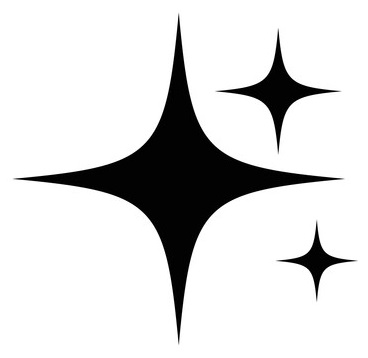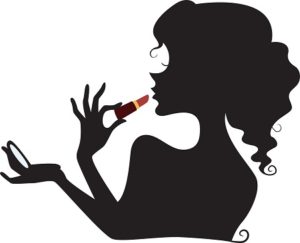Below you will find a list of tips to help support you as a media guest, for public speaking, audio and video conferences, job interviews, and any kind of communication with other human beings. I hope you will think of these as resources to support you and don’t get overwhelmed by trying to take it all in or thinking that you have to do it all. The main thing is to focus on your purpose and be yourself, and keep in mind the energy of the quote above.
The tips below, and my coaching style in general, are based on a philosophy of support and fulfillment of your purpose rather than techniques and strategies for manipulating audiences and clients. My approach is also more about taking away distractions than adding to, changing, or covering up who you really are, so that your true self can shine. If wearing non-distracting wardrobe, reducing some shine on the forehead, having your hair mostly in place, and speaking with intention can help an audience focus on your message, then that’s part of supporting you and your purpose.
I believe that authenticity and congruence are the true keys to a great media interview and any kind of good communication, as well as to a life of deeper contentment and contribution to the greater good. And to me, that is true success. I hope you find these tips helpful, and that they help you convey your message in a way that is true to who you are.
On this page you will find on-camera tips for: hair, makeup, wardrobe, skin care and men’s grooming. Tips for audio, video, voice, and movement are on their own page.
HAIR - MAKEUP - WARDROBE - GROOMING
HAIR
You know your own hair better than anyone else, so unless you are an actor auditioning for a role, it’s OK to wear your hair how you like and be yourself. After all, chances are that being who you really are has a great deal to do with why you are being contacted by the media! I generally recommend not to get a new haircut right before any important event, especially an on-camera interview (the only exception being if you have a long standing hair stylist you trust, and you know your hair consistently looks better after a fresh cut). Otherwise, plan any cuts, colors or hair treatments at least 2 weeks before any important occasion. Another important thing to know is that stray hairs can catch the lighting on camera in ways we do not necessarily tend to notice in-person, so take a good look in the mirror beforehand. Turn your head in different directions and angles to check how the light hits it when you move. Especially if you have a tendency towards frizz or stray hairs, a light, non-greasy styling wax can be very helpful. Touch your finger lightly in the wax, then gently smooth down any strays or fly-aways without matting down the rest of your hair. Avoid greasy or oily products and apply sparingly. Also make sure your hair is out of your eyes and not creating shadows on your face. This is something you can check ahead of time for remote interviews by setting up your computer’s camera with whatever lighting you will be using (see ‘Dress Rehearsal’ below).
MAKEUP
The camera does not tend to like shiny or reflective makeup and skin care products because they can actually read like sweat depending on the lighting! Sweat sends a subconscious message that the presenter is uncomfortable, or possibly even lying – not that you are! – and so anything that makes you look shiny is best to avoid. This includes not only shimmer products, but most mineral powders as well (both loose and pressed). That said, if you are a drag queen with a high definition camera that reads shimmer and sparkles well, and you have the right lighting, go for it! Otherwise, matte finish products tend to read better on camera. If you have very dry skin, it’s OK to use a moisturizing foundation, but use a matte powder over it, along with matte eye shadows, blush, lipstick etc. Lip gloss can tend to reflect the light in odd ways as well, so matte finish lip products are ideal in most situations.
SKIN
The biggest thing to consider on camera when it comes to skin is usually shine control. Whether due to oil, sweat, or lighting, there are things that can be done to prevent excess shine. There are many anti-shine products out there, as well as primers and pore-minimizers. Some of the anti-shine products I have liked over the years are Smashbox Photo Finish Oil & Shine Control Primer, and Face To Face SuperMatte AntiShine (a professional line available via Frend’s Beauty online). Neutrogena and many others make pore-refining mattifiers as well to help even out the skin before apply makeup or they can be worn with no makeup.
Take good care of your skin even when you are not on camera. If you have an appearance or live event scheduled, be mindful of sun protection in the week or so prior. Use generous amounts of sunscreen, reapply frequently, and/or wear a hat. I can’t tell you how many people I’ve had to compensate for makeup-wise after a ski trip, sun filled get way, or sunny weekend, when their face is burned and they have white circles around their eyes from wearing sunglasses or ski goggles. While these things can be compensated for with makeup, if you are applying it yourself it’s not nearly as easy as it requires mixing and matching just the right shades and applying different tones in the lighter and more burned areas. Also burned skin can peel, and you can’t cover peeling up with makeup. Men tend to get burned, red necks as well, and trying to cover this up with makeup is tricky because you it can easily rub off on shirt collars.
WARDROBE
“What should I wear?” is one of the first questions many of us will ask when it comes to a media interview or public appearance. My philosophy is always to be authentic to yourself, and of course true to your industry especially if you are being hired by a large company to do a presentation. That said, what reads best on camera are solid colors with no busy patterns or small prints. There is a technical reason for this as very fine patterns and lines can cause something called a moiré pattern which looks like wavy lines when viewed on a screen. Aside from this, in the majority of cases you want the focus to be more on your message, and less on a busy tie or large earrings. Avoid things that will distract the viewer from the delivery of your message. Again, if you are some sort of entertainer or media personality and this is part of what you are known for, it would likely be strange not for you to have these things. So choose accessories and clothing that fit both your personality and your message.
MEN'S GROOMING
Some things for men to consider before an on-camera appearance are:
1) Shave carefully to avoid nicks
2) Trim eyebrows, nose hairs and neck hairs
3) Double check in a mirror that there are no stray hairs sticking up from the rest (if your hair is long enough)
And finally: it’s not emasculating to wear a little makeup! Or as I like to call it “High Definition Powder” ; ) I have applied makeup for Dan Aykroyd, Paul Allen, sports and political figures, actors, musicians, billionaires and politicians. It’s actually the norm for television, print, and film. I consulted with an actor once before a big audition; he had rosacea and was concerned that his red, blotchy skin would prevent him from landing the part. I recommended a powder foundation with anti-inflammatory properties that would both calm his skin and cover up the red. I heard back from him later “I landed a $40,000 commercial because of you!” Well I don’t think it was because of me, but rather his talents, but if removing a distraction helped him land the part I was thrilled to support him in his work.
If you feel like your skin tone is pretty even and you don’t need much coverage, but could use a little shine reduction, there are some great powders that have barely any pigment but will help tone down the shine from lighting or excess oil. One I like for this purpose is MAC blot powder in the pressed formula (it’s not as messy as the loose powder). If you are fair to medium skin tone I like the medium shade (they tend to run very light, almost no one needs the ‘light’ shade); if you are medium you might try ‘medium dark’ (again they run quite light); if you are a darker skin tone try ‘dark’ or ‘deep dark’ though in a pinch even ‘medium dark’ might work. Regarding hair cuts and important events, see the hair section above and regarding skin care, oily skin and sun protection, see the skin care section.
DRESS REHEARSAL
One of the best things you can do to prepare yourself for any kind of media interview or performance is a dress rehearsal. There are slightly different approaches for audio and video:
VIDEO
Some time ahead of the big day, choose your outfit and do your hair and makeup or grooming as you intend to the day of. One option is to record yourself speaking on camera and play it back to see what you might improve. Don’t be too hard on yourself and remember that a lot of famous actors who are considered some of the most beautiful people in the world cannot stand to see themselves on camera, or listen to audio of themselves talking. If you don’t want to subject yourself to this (which I totally understand), you can hire someone like me to work with you 1:1 over video conference and give you personal coaching, without ever having to watch yourself. If you are doing a remote interview it’s a really good idea to do a test run with Skype or Zoom or whatever application your interviewer will be using to make sure you are familiar with the basic settings of that platform. It can be very distracting trying to figure out basic features like audio, video and chat settings when your real purpose for being there is to share your knowledge, information, and experience.
LIGHTING
Lighting on camera makes a huge difference in how the overall video looks and how well people can see you. For remote interviews from your home or office, setting up with the daylight from a window facing you can work well. Overhead lighting can create odd shadows on the face. There are consumer grade lights you can purchase online for just such purposes that are reasonably priced, including ring lights which create a nice even light with no shadows on your face. They make very small ring lights to go around a camera lense and large ones that are set up on a stand, I recommend the larger type if you have the space and budget. Otherwise, get out whatever lamps you have and try moving them around until you find the a good configuration.
The subconscious mind perceives anything unfamiliar as a threat, which can contribute to nervousness the day of the interview. A dress rehearsal will establish a certain level of familiarity and comfort, and your subconscious mind will allow you to relax more and focus on your message, which is the reason you are there.
For tips on audio, video, voice, and movement, visit:
For more information, or to book a consultation:
PODCAST COACHING
Have you been thinking about hosting your own podcast? I’d love to help you get started! mimi@stellarstyle.com If you want to check out my show visit:
The Dream Detective podcast

